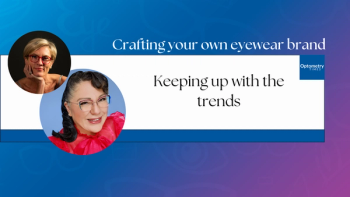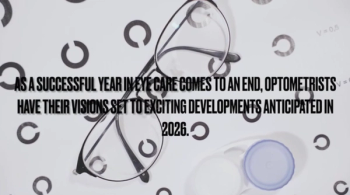
Contact Lens Institute releases full report on contact lens wearer retention
Comfort, vision, freedom from glasses, and convenience were cited as benefits of wearing contact lenses by survey participants.
Following consumer data released in late September,1 the Contact Len Institute (CLI) has released the full report that detailed new and long-term soft contact users’ rates of retention. The report, entitled “Disrupting the Dropout Dilemma: Practical Steps to Keep Patients in Contact Lenses,” found that satisfaction in contact lens wear was generally high across all survey participants.2
One of the findings from the report was that once contact lens wearers crossed the 2-year mark, they were highly unlikely to pause contact lens use in the future. As many as 87% of survey participants cited having never stopped wearing their lenses.2
Both new wearers, defined as those who have been wearing lenses for less than 2 years, and long-term users, or those who have been wearing for 2 or more years, both noted comfort, vision, freedom from glasses, and convenience as the benefits of wearing contact lenses. Factors that contributed to cons of wearing contact lenses included cost, handling comfort, vision and convenience. Notably, comfort, vision, and convenience were both noted are satisfactory and dissatisfactory. Additionally, 28% long-term wearers also cited price sensitivity as the greatest dissatisfaction issue.2
“When discussing recommendations for contact lenses with patients, it’s essential to weight both performance and cost,” said Shelby Brogdon, OD, of McFarland Eye Care, in the report. “A higher price doesn’t always mean better performance for every patient, but investing in the right type of lens for their specific needs can save the patient money and improve their overall satisfaction.”
Additionally, dual wear was found to positively affect contact lens retention. In new wearers, 60% stated that talking about interchanging contact lens and glasses with practice staff was highly to somewhat likely to influence continued contact lens wear.2
“The conversation around dual wear of contact lenses and glasses can significantly boost patient satisfaction and practice profitability,” said Angelica Cifuentes, OD, of Bye Dry Eyes/Blinking Owl Eyecare, in the report. “From a patient satisfaction standpoint, dual wear offers flexibility. For example, patients might prefer glasses for computer work to reduce eye strain, while contact lenses are ideal for sports or social events. This versatility enhances the patient experience, making them feel better equipped to manage different aspects of their daily lives. Furthermore, addressing potential issues like dry eye or discomfort from over-wearing contacts can build trust, as patients see us prioritizing their long-term eye health.”
Compliance considerations were also noted, with 74% of new wearers and 65% of long-term wearers stating that they follow contact lens replacement instructions given to them by their eye care provider. Lack of compliance was also observed among daily disposable wearers, with 17% of new and 31% of long-term wearers reporting that they have stretched their replacement schedules.2
Additionally, annual examinations are a regular occurrence for 4 of 5 respondents, with around 95% reported visiting their eye care provider at least every 2 years.2
The full report can be found on CLI’s
References:
New Contact Lens Institute research pinpoints practice behaviors that help retain new contact lens wearers. News release. Contact Lens Institute. September 17, 2024. Accessed October 31, 2024.
https://www.contactlensinstitute.org/news/new-contact-lens-institute-research-pinpoints-practice-behaviors-that-help-retain-new-contact-lens-wearers/ Contact Lens Institute. Disrupting the Dropout Dilemma: Practical Steps to Keep Patients in Contact Lenses. 2024. Accessed October 31, 2024.
https://www.contactlensinstitute.org/wp-content/uploads/2024/10/CLI-Disrupting-Dropout-Report_Fall-2024_FINAL.pdf
Newsletter
Want more insights like this? Subscribe to Optometry Times and get clinical pearls and practice tips delivered straight to your inbox.













































.png)


